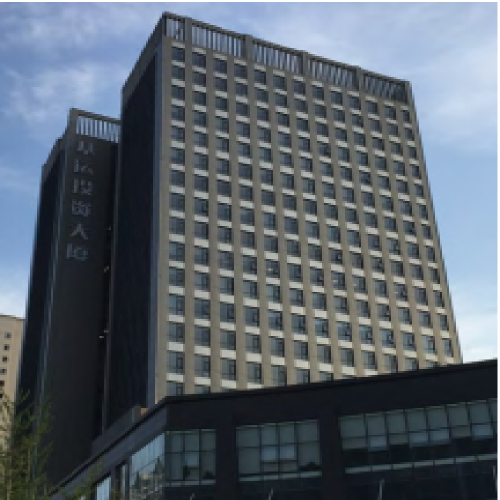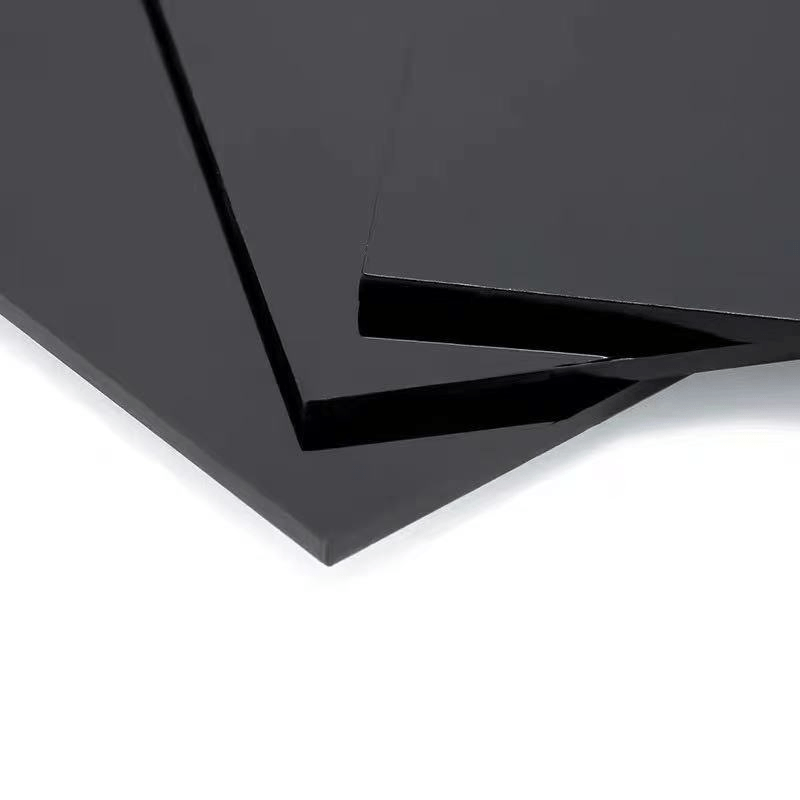Სიგრძის გადაცემის შემცირება ინფრაწითელური რეფლექსით
Სპეციალური საფარით დამზადებული ამინდის უკან ატაცებს ინფრაწითელი სხივების უმეტესობას, რაც ამცირებს სითბოს გადაცემას ფანჯრის მეშვეობით. ამის შედეგად, მარტივი ტემპერატურის შენარჩუნება ხელს უწყობს გათბობის ან გაგრილების სისტემების ნაკლებ გამოყენებას. როდესაც მზის სხივები ხვდებიან ასეთ სარკეზე, საფარი უმეტეს ნაწილად უკან ატაცებს სითბოს, რაც აცივებს შიდა სივრცეს გრილ დროს და შენარჩუნებს სითბოს გასივების დროს. ჟურნალის Building Physics-ის მონაცემების მიხედვით, ზოგიერთი სპეციალური საფრის მქონე ამინდი ატაცებს დაახლოებით ინფრაწითელი სხივების 95 პროცენტს. შედეგად, შენობები ნაკლებ ენერგიას ხარჯავს მიკროკლიმატის კონტროლზე, ხოლო მათ მომხმარებლებს უზრუნველყოფს უფრო მაღალ კომფორტს წელის განმავლობაში.
Შემცირება HVAC სამშენებლოში
Ენერგოეფექტური მინა ნამდვილად ამარტივებს HVAC სისტემების გამოყენებას, რაც შენობებში ხარჯვად ენერგიის დაახლოებით 40%-ს შეადგენს. კომერციული სივრცეები, სადაც დამონტაჟებულია დაბალგამტარობის ან Low-E მინა, ხშირად აღნიშნავენ გაცივების საჭიროების მნიშვნელოვან შემცირებას. ზოგიერთი კვლევის მიხედვით, შენობები, სადაც გამოიყენება Low-E მინა, 20-დან 30 პროცენტამდე ზღვარს უსვამს თავიანთი ენერგობილინგს, რაც წელთა განმავლობაში საკმარისად დიდ დაზოგვას უზრუნველყოფს. ბოლო დროს შენობების სტანდარტები მეტად მოითხოვს მწვანე მასალების გამოყენებას, რაც უფრო იოლს ხდის კომპლიანსს და ხელს უწყობს მშენებლობის სფეროში გამძლეობის ძალისხმევებს. ვინაიდან საფარიანი მინა სრულიად ეტარება ამ ახალ სტანდარტებს, ბევრი განვითარების აგენტი და არქიტექტორი ამ ამონახსნისკენ ამის გაკეთებას ცდილობს, როდესაც ენერგოხარჯების შემცირება უნდათ კომფორტის ხარჯზე უარყოფითი ზემოქმედების გარეშე.
Ციკლური კარბონური გამოსავლების შემცირება
Მიუხედავად იმისა, რომ არქიტექტორები ამ მასალის გამოყენებით უმაღლეს ეკოლოგიურ სტანდარტებს აკმაყოფილებენ, ეს ასევე ხელს უწყობს მშენებლობის საუკეთესო პრაქტიკების გავრცელებას მთელ ინდუსტრიაში, სადაც გარემოს დაცვა სამშენებლო პროცესების მნიშვნელოვან ასპექტად გამოდგება. დაფარული მინის გამოყენება ნამდვილად ამცირებს ნაგებობების ექსპლუატაციისას გამოყენებული ენერგიის მოცულობას, რაც კიბომეტრის შესაბამისად ნახევრად აკლებს ნაგებობის ნახშირორის შემცველობას მისი სრული სიცოცხლის განმავლობაში. ასეთი ენერგიის დაზოგვა ეხმარება ქვეყნებს მათი მიზნების მიღწევაში, რათა ატმოსფეროში ზიანის მიმდინარე აირების რაოდენობა შეამცირონ და გლობალური კლიმატის ცვლილებების გავლენა შეამსუბუქონ.
Ტექნოლოგიური ინოვაციები წამყვანად გარეშე სასამართლოების დაფარვაში
Ლიკვიდური სასამართლოების დაფარვის განვითარება
Სითხის მსგავსი მინის საფარი იცვლის გზას, რომლითაც ჩვენ გვეჩვენება მინის ტექნოლოგიის გამძლეობაზე. მათი განსაკუთრებულობა მდგომარეობს ულტრა თხელ ბუნებაში, რომელიც საკმარისად მაგრამ იცავს ზიანისგან. სტანდარტული მინის ზედაპირები მიიღებენ ნამდვილად სასარგებლო საშუალებას ამ საფარისგან, რომელიც შეიცავს ანტი განათის ეფექტს, უფრო მაღალ მდგრადობას მზის სხივებისა და ხაზების წინააღმდეგ. ზოგიერთი ახალი ვერსია თავის მოწმენტს ასუფთავებს, რაც ამცირებს შენობის მენეჯერების ხარჯებს საწყობების მოსაშრობად, ვინაიდან ხალხის მიერ ხელით ჩატარებული სამუშაოების საჭიროება ნაკლებია. არქიტექტორები და დიზაინერები აღმოაჩენენ ამ საფარებს განსაკუთრებით სასარგებლოს შენობების მისაუბრობის შესანარჩუნებლად მშენებლობის სხვადასხვა პროექტებში მკაცრი მოთხოვნების შესასრულებლად.
Ინტეგრაცია ინტელექტუალურ სურათის დინამიურ მუშაობისთვის
Გონივრული სარკის ტექნოლოგია ამჟამად იმ გზით იცვლის ჩვენს მოსაზრებას კომფორტზე და ეკოლოგიურ შენობებზე, რომ მხოლოდ მარტივი შეხებით ან ხმის ბრძანებით ეს ინოვაციური მასალა შენობებს აძლევს სინათლის, ტემპერატურის კონტროლისა და კონფიდენციალურობის დონის მორგების საშუალებას. როდესაც ის ინტერნეტ ნივთების საშუალებებთან არის დაკავშირებული, გონივრული სარკე სინამდვილეში დახმარებას ახდენს ენერგომოხმარების მენეჯმენტში რეალურ დროში, რაც ნიშნავს შენობის საერთო შესრულების გაუმჯობესებას და ენერგოსაწვავის დაბალ ხარჯებს საკუთრების მფლობელებისთვის. ზოგიერთი კვლევა აჩვენებს, რომ კომერციული შენობები შეიძლება დაზოგონ დაახლოებით 30% ენერგო ხარჯებზე ამ მასალის გამოყენებით, მიუხედავად იმისა, რომ ფაქტობრივი შედეგები დამოკიდებულია ადგილმდებარეობაზე და გამოყენების შაბლონებზე. რაც ნამდვილად განასხვავებს გონივრულ სარკეს, არის ის, თუ როგორ ისწრაფვის ის სივრცეების გადართვა გამჭვირვალე და უხილავ მდგომარეობებს შორის. ზუსტად ეს თვისება ახსნის, რატომ უყვარს არქიტექტორებს მისი გამოყენება საოფისე შენობებიდან დაწყებული ლუქსური სახლებამდე, სადაც მომხმარებლები ურჩევენ როგორც კონფიდენციალურობას, ასევე საუკეთესო ქალაქის ხედებს, როდესაც ის სჭირდებათ.
Დამაგრების გამომდინარე დაბრუნების საშუალება გრძელობისთვის
Მინის წარმოების დროს, მწარმოებლები იყენებენ პიროლიზურ საფარს, რაც ქმნის მართლა მაგარ და მყარ ზედაპირს. ეს სპეციალური საფარი გამძლე ამინდის პირობებისა და სხვა გარემოს ზემოქმედების მიმართ, ამიტომ ის ხანგრძლივად ინარჩუნებს კარგ მდგომარეობას. ზოგიერთი გამოცდა აჩვენებს, რომ ეს საფარი შეიძლება დარჩეს უცვლელი 30 წელზე მეტი ხნის განმავლობაში, რაც უზრუნველყოფს მის გამოყენებას ნებისმიერი ტიპის შენობებში, ისევე როგორც კომერციული სივრცეების, ასევე საცხოვრებელი სახლების შემთხვევაში. მისი ხანგრძლივობა უზრუნველყოფს შენობის სტრუქტურის შენარჩუნებას ხარჯების შემცირებით შეკეთებაზე ხანგრძლივი პერიოდის განმავლობაში. არქიტექტორებისთვის, რომლებიც განიხილავენ გრძელვადიან გამართულ განვითარების ასპექტებს, ასეთი საფარი წარმოადგენს გონივრულ არჩევანს, რადგან ის მოგვიანებით არ მოითხოვს ხშირ ჩანაცვლებას.
Ჩარჩოებით Low-E დაფარული სურს: სამართალი ამოხსნა
SC60/SC70 სურსის ტექნოლოგიის მახასიათებლები
SC60/SC70 მისამართლების ტექნოლოგია ფანჯრების მოწყობის არჩევანში მნიშვნელოვნად წინ წაადგილებს, რადგან ის ლამაზი გარეგნობის და ენერგომოხმარების შემცირებას უზრუნველყოფს. ამ მისამართლის განსაკუთრებულობა იმაში მდგომარეობს, რომ ის შინაგან სივრცეში სინათლის შემოტანას უზრუნველყოფს გარეშე სიცხის შემოსვლისა გამავალ ამინდში. ინდუსტრიული ტესტების მიხედვით, მაშენები, რომლებიც ამ მისამართლით არის დამაგრებული, ხშირად აღწევენ U-მნიშვნელობებს 0.20 ან მასზე ქვემოთ. ეს კი ნიშნავს, რომ მშენებლები ნაკლებს ხარჯავენ ჰაერის გასაგრილებლად, რადგან მისამართლები უკვე ასრულებენ ამ ფუნქციას. ნებისმიერი ადამიანისთვის, რომელიც სამშენებლო პროექტებში როგორც გარეგნობაზე, ასევე ფუნქციონალურობაზე უპირატესობას ანიჭებს, ეს მისამართლები კარგი და სანდო არჩევანია.

Სინათლის გადაცემისა და სიცივის კონტროლის ბალანსი
Შენობებისთვის განკუთვნილი აზიდის დიზაინი არის რეალური პრობლემა, როდესაც ცდილობ შეუშვა საკმარისი სინათლე, მაგრამ არ შეუშვა ზედმეტი სითბო. ამ პრობლემის ამოსახსნელად ხშირად გამოიყენება Low-E საფარი, რომელიც საშუალებას გვაძლევს გავუშვათ ხილული სინათლე, მაგრამ არ შევუშვათ ინფრაწითელი და UV სხივები. რა აკეთებს ამ საფარს ასეთ სასარგებლოს? ის უზრუნველყოფს შიდა სივრცეების კომფორტულ მდგომარეობას და ამარაგებს სითბოს დაბინძურების ხარჯებს. კვლევები, რომლებიც აფასებენ სხვადასხვა აზიდის შუშის შუშის სინათლისა და სითბოს მართვის შესაძლებლობებს, ბოლოდროინდელ დროს აღმოაჩინეს საინტერესო მონაცემები. ადამიანები უფრო მარტივად განწყობილნი არიან სამუშაო ან საცხოვრებელ სივრცეებში, სადაც უკეთ არის დამუშავებული ბუნებრივი სინათლე, და დღის განმავლობაში ისინი იშვიათად ანთებენ ხელოვნურ სინათლეს. ეს კი საერთოდ ნიშნავს ელექტროენერგიის ნაკლებ გამოყენებას, რაც ქმნის უფრო გარემოს დამცავ შენობის ატმოსფეროს და არ არღვევს კომფორტს.
Ნეიტრალური ესტეტიკა შეხვედრა მაღალ CRI პერფორმანსით
Დღეს საფარულიანი მინის ვარიანტები მართლაც აერთიანებს კარგ ფერის გადმოცემის ინდექსის (CRI) შესრულებას და ნეიტრალურ გარეგნობას, რაც შიდა სივრცეებს უზრუნველყოფს ვიზუალურად გამოჩენილობას. არქიტექტორებს უყვართ, რომ ნეიტრალური გარეგნობა შედის შენობებში და არ გამოირჩევა ზედმეტად, რაც საკუთრების განვითარების საშუალებას აძლევს მათ უნდა ჰქონდეთ პროექტების ერთგვაროვანი გამოსახულება ნებისმიერი კუთხიდან. მაღალი CRI-ს მქონე მინა მნიშვნულად გარდაქმნის საოფისე გარემოს. ხალხი უკეთ მუშაობს იმ სივრცეებში, სადაც ფერები ნამდვილად და ცოცხლად გამოიყურება, დაბინძურებული ან დამახინჯებული სამაგიეროდ. ზოგიერთი კვლევა ასევე აჩვენებს, რომ ხარისხიანი მინის გამოყენებით სინათლის გადატანა შეიძლება გაზარდოს თანამშრომლების სურვილი და მაღალი შედეგები დროის განმავლობაში.
Case Studies: Coated Glass in Green Construction
Commercial High-Rise Energy Savings
Სასტიკ შენობები ხარის გამოყენებას იწყებენ დამუშავებული სამყაროს, რადგან ის ენერგიის დასაზოგად დახმარებას უწევს და სხვაობა საკმარისად შთამბეჭდავია. მიიღეთ ბულიტის ცენტრი სიეტლში, მაგალითად, ისინი გაიგონ, რომ მათი შენობა დაახლოებით ნახევარი იმდენივე ენერგია იყენებდა გათბობისა და გაგრილებისთვის ამ სპეციალური სამყაროს დაყენების შემდეგ. ფულის დაზოგვა ექსპლუატაციის ხარჯებზე მნიშვნელოვანია, რა თქმა უნდა, მაგრამ სხვა სარგებელიც არსებობს - შენობიდან ნაკლები გამონაბოლქვი ნიშნავს უკეთეს ჰაერის ხარისხს ყველასთვის მიმდებარედ. რასაც ახლა ვხედავთ არის ქალაქების შთაგონება, რომ სცადონ მსგავსი მიდგომები ინფრასტრუქტურაში. დამუშავებული სამყარო უკვე არ არის მხოლოდ ზუსტი თვისება - ის ნამდვილად განსხვავებას ქმნის ჩვეულებრივი საოფისე აშვენების გადაქცევაში იმაში, რაც უკეთ იმუშავებს ბუნებასთან ერთად, პირიქით კი. და გათვალისწინებით იმისა, თუ რამდენი ახალი განვითარება ხდება მსოფლიოს მასშტაბით ამ მომენტში, გზების მოძებნა ამ ცვლილებების გასაკეთებლად სრულიად გასაგებია ბიზნესის მფლობელებისთვის და საზოგადოებებისთვის ერთნაირად.
Რეზიდენტური რეტროფიტირების წარმატებული სტორიები
Უფრო ძველ სახლებში მინების ჩასმა დაბალ გამოყენების მქონე საფარით მოწონებულია ენერგიის დასაზოგად. ხალხი, რომელიც ძველი მინების ამ ახალი ვერსიებით შეცვალა, ხშირად აღნიშნავს თვიური გადასახადების დაახლოებით 25%-ით შემცირებას. თუმცა აქ ფულის დაზოგვაზე მეტია შესაძლო: ასევე მრავალი ადამიანი აღნიშნავს კომფორტული შიდა განტვირთვის გრძნობას ანგარიშის გაკეთებისას, ასევე მათი სახლები უფრო მაღალ ფასებს იჩენს ბაზარზე. ამ მუშაობის ეფექტურობის მიზეზი იმ სპეციალური საფარის გამოყენებაა, რომელიც სითბოს საჭირო ადგილას აკავებს: შეინახავს სითბოს ზამთარში ან აბლოკირებს ზედმეტ მზის სითბოს ზაფხულში. ჩვენ ვხედავთ, რომ სახლის მფლობელები მინების განახლებას უკვე არ განიხილავენ როგორც მხოლოდ შენობის შენარჩუნების საშუალებას, არამედ როგორც გარკვეულ ინვესტიციას სახლის მშენებლობისაკენ, მთავარი რომელიც ხელს უწყობს როგორც ბიუჯეტის, ასევე გარემოს დაცვას მომდევნო პერიოდში.
Ავტომობილი-არქიტექტურა ტექნოლოგიის გადატანა
Ბოლო რამდენიმე წელია, ავტომობილებისთვის შემუშავებული ტექნოლოგიური აღმოჩენები, როგორიცაა მრავალშრიანი ან ლამინირებული მინის ტექნოლოგია, შენობების დიზაინში გამოიყენება. როდესაც სხვადასხვა ინდუსტრიები უზიარებენ ერთმანეთს გამოგონებებს, შენობებიც უფრო მაგარი და უსაფრთხოც ხდებიან. წარმოიდგინეთ, თუ როგორ ეხმარება ეს შენობებს აგრესიული ამინდის პირობების ან ყოველდღიური გახმაურების წინააღმდეგ დამაგრებაში. არქიტექტორები ახლა უკვე იყენებენ ავტომობილების დიზაინიდან შეტანილ იდეებს, რათა სრულიად გადახედონ შენობების გარეგნობა და ფუნქციონირება. უკვე ვხედავთ სხვადასხვა სახის ინოვაციურ მიდგომებს, რომლებიც ენერგიის დაზოგვას უზრუნველყოფს და ამასთან ესეთი შენობები ესთეტიკურად მიმზიდველიც გამოდის. რეალური გამოყენება კი ის არის, რომ შენობები ესთეტიკურად გამოჩნდეს, მაგრამ ენერგომოხმარებაშიც უფრო ეფექტუალურად იმუშაოს. სხვადასხვა სექტორებს შორის ასეთი თანამშრომლობა უფრო მდგრადი ქალაქების და სახლების აშენების მიმართულებით გვიყვანს.
Ცირკულური ეკონომიკა და მომავალი ტენდენციები
Coated Glass-ის რეციკლინგის გამოწვევები
Დამუშავებული იატაკის გადამუშაობას უკავშირდება რამდენიმე ნამდვილი პრობლემა, რადგან ამ მასალაზე წარმოების დროს დახვეწილია სპეციფიკური საფარი და მიმაგრებელი ნივთიერებები. ეს მასალები არ იკვეთება სტანდარტული გადამუშაობის პროცესებში, რაც გულისხმობს იმას, რომ უფრო ეფექტუანი მეთოდების მოძებნა საჭიროა ამ საშენი ნარჩენების დემოლიციის ადგილებში გადასამუშავებლად. უკვე არსებული ნაგავსაყრელები სავსეა ასეთი სახის ნარჩენებით, ამიტომ გადამუშაობის უფრო გონივრული გზების მოძებნა არ არის მხოლოდ სასარგებლო, არამედ აუცილებელია გარემოზე ზიანის შესამცირებლად. ამჟამად მიმდინარეობს საინტერესო კვლევები ახალი გადამუშაობის მეთოდების შესახებ, რომლებიც შეიძლება უფრო მეტი მასალის აღდგენას უზრუნველყოფდნენ ამ ნარჩენებიდან, ვიდრე ადრე იყო შესაძლებელი. და უნდა აღიაროთ, რადგან ყოველწელიწად უფრო მეტი შენობა იკეთება დამუშავებული იატაკით, მისი გადამუშაობის სწორი მეთოდების მოძებნა უფრო მნიშვნელოვანი გახდება ნებისმიერისთვის, ვინც სცადებს ასაღებს ნამდვილად წრიულ ეკონომიკას, სადაც არაფერი გადაიყრება.
Ახალგაზრდა ბიო-ბაზირი დაფუძნების მასალები
Ბიო-წყაროსანი საფარის მასალები სამყაროს სხვადასხვა სექტორში, მათ შორის ავტომობილების და მშენებლობის სფეროში გრინ ალტერნატივების მოძებნით დამატებით აქტიურად გამოიყენება. მცენარეული ან ცხოველური წყაროდან გამომავალი ეს საფარები იძლევა სტანდარტული პეტროლიუმზე დამზადებული პროდუქტების მსგავს სიმტკიცეს და გამძლეობას გაცილებით უფრო გამართლებული გარემოს დაცვის პირობებით. მათ შორის უკვე არის მრავალი მასალა, რომელიც აკმაყოფილებს LEED სერტიფიკაციის მოთხოვნებს და სხვა გრინ მშენებლობის სტანდარტებს, რომლებიც დიდ ქალაქებში სავალდებულო მოთხოვნებად გადაიქცა. როდესაც მშენებლები ამ საფარების გამოყენებას ასპეციფიკებენ, ისინი არა მარტო პროექტის გარემოზე მორგებულ სანიშნებს უმატებენ, არამედ მიმზიდველია იმ კლიენტებისთვის, რომლებიც გამოხატავენ მდგრადობის მიმართ თავის პასუხისმგებლობას. მიუხედავად იმისა, რომ ეს მიდგომა ჯერ ახალგაზრდაა, ბიო-წყაროსან ამონახსნებზე გადასვლა შეიძლება ნელ-ნელა შეცვალოს მშენებლობის მასალების არჩევანის მიდგომა და მთელი ინდუსტრიის გადატანა უფრო პასუხისმგებლო პრაქტიკებზე.
Რეგულაციული წარმოება ნეტო-ნული გლაზინგისთვის
Მსოფლიოს მასშტაბით მთავრობები უფრო მეტად უწყობენ ხელს იმ შენობების აშენებას, რომლებიც მიზნად ისახავს ნეტ-ნულოვან ენერგიას, რამაც შექმნა გაჭირვებული ბაზარი გონივრული სარკმლის ამონახსნებისთვის. წესები ძირითადად მიზნად ისახავს შენობების ეფექტურობას სახურავიდან საფუძვლამდე, ამიტომ არქიტექტორები მიმართულნი არიან მაღალი ტექნოლოგიის მიერ დამუშავებულ მინის საფარის გამოყენებას, რომლებიც გადადიან მკაცრ სასურველ ტესტებს. მომავალში, შენობები სავარაუდოდ შეიცავს რამდენიმე სისტემის ერთობლივ გამოყენებას ენერგიის დანახარჯის შესამცირებლად. მაგალითად, ნეტ-ნულოვანი მინების გამოყენება ხდება თანამედროვე დიზაინების მნიშვნელოვან ელემენტად, რადგან ის ეხმარება ნახშირორის გამოყოფის შემცირებაში და ქალაქების მეტად მწვანედ გარდაქმნაში. ეს წესები არ უბრალოდ იცვლის იმას, თუ რა იქმნება, არამედ ფორმირებულია ისე, თუ როგორ უნდა იყოს დაპროექტებული მწარმოებლების პროდუქტები, რითმოუწყობს ხელს ენერგიის დამზოგავი საფრის გამოყენებას მშენებლებისთვის საჭირო მომავალი სტრუქტურებისთვის.
